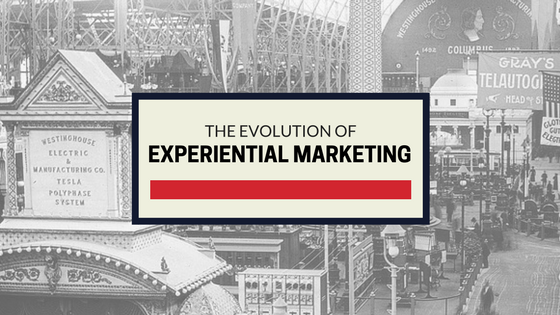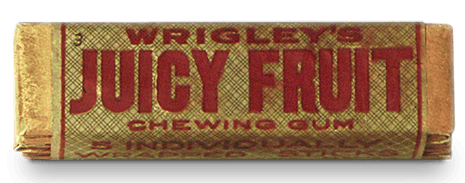01.26.18
By ATN Event Staffing


Experiential marketing was the buzzword of 2017 in the marketing world, but many may not know the history of this form of marketing. Brands have been using various forms of experiential marketing for over 125 years! Take a look at how the industry has evolved from the 1800s to present day.
The first documented examples of experiential marketing are from the 1893 Chicago World’s Fair. Here, brands like Wrigley’s, Pabst, and Cracker Jack debuted their brands and products to the world. William Wrigley, Jr. himself handed out pieces of Juicy Fruit to attendees in hopes to drive sales.

Items that we can’t live without were also introduced at the same expo. Josephine Cochran demonstrated her invention, the automatic dishwasher, to attendees. Josephine’s concept later led to the creation of her very own brand – KitchenAid.
Nancy Green’s cooking demonstrations required extra security to keep people moving. As Nancy told stories to those crowded around the stage, she cooked pancakes using a ready-mix pancake mix that we know as Aunt Jemima. The Davis Milling Company, creators of the pancake mix, received over 50,000 orders as a result of Nancy’s product demonstrations. They awarded her with a lifetime contract and dubbed her “The Pancake Queen.”
In 1936, Oscar Mayer’s nephew had the brilliant idea to promote the family’s hot dog brand by building a hot dog vehicle, the Weinermobile. The Weinermobile hit the streets of Chicago and the driver, a “hotdogger,” handed out toy whistles shaped like the iconic vehicle to create brand awareness.

In 1983, Jay Conrad Levinson, a seasoned marketer, published “Guerrilla Advertising.” Levinson’s book aimed to educate small business owners on a low-cost and unconventional marketing strategy. His strategy focused on the element surprise. Surprising consumers with a product or service in an unexpected place or time would create a memorable experience for them. Levinson’s tips worked, and it wasn’t long before big brands implemented guerrilla marketing strategies, too.
By the late 1990s, guerrilla marketing campaigns were everywhere. Bikini-clad women handed out sunscreen on Spring Break beaches. Moms demonstrated stain removers at retail stores. College students handed out koozies and coupons for pizza joints on college campuses. Marketing was changing.
Fortune 500 brands took everything that we have learned so far about experiential marketing – branded vehicles, product samplings, and guerrilla marketing – and rolled it into one mega campaign. The mobile marketing tour. The concept behind a mobile marketing tour was to take a brand on the road and reach as many consumers as possible in cities all over the country.
Before social media came along, experiential marketing activated in a very limited space. Only the consumer that experienced the event was left with an impression. Social media completely changed that scenario. With social media, consumers could instantly share content with the world. And experiential marketers took note. Most brand activations today include some type of social sharing element, whether it be a #hashtag, a contest, or a photo-sharing element. Social sharing extends the reach of the event not only to people all over the world, but it also continues the story long after the event is over.
Brands put on a big show at major events like the Super Bowl, SXSW, Comic-Con, and Coachella. Giant, immersive footprints allow attendees to experience the brand through various interactive elements like virtual reality, simulators, games and activities, and digital elements. Immersive events drop consumers into the brand’s story which creates a long-lasting impression and helps to create brand loyalty.
Pop-up events have become a popular experiential option for brick-and-mortar retailers, online shops, artisans, and corporations. Pop-ups give brands of any size the opportunity to showcase their products or services in a temporary space for a limited time.

Experiential marketing has come a long way over the past 125 years, but many of the tactics remain the same. Throughout the years, there has been one common denominator in experiential marketing: face-to-face engagement. From William Wrigley, Jr. promoting Juicy Fruit to the hot dogger handing out branded whistles to the mom promoting the stain remover, human contact is the heart of experiential marketing.
Just as experiential marketing has changed and evolved, so have the people that represent brands. The need for experienced event staffing professionals has increased with the rise in experiential events. For over 17 years, ATN has been a trusted event staffing agency for the experiential marketing industry. Our approach to event staffing is to focus on the skills and qualifications of our brand ambassadors. We then use that information to provide our clients with the right people for their events. If you would like to learn more about our staffing solutions or if we can answer any questions for you, please contact one of our event staffing gurus.